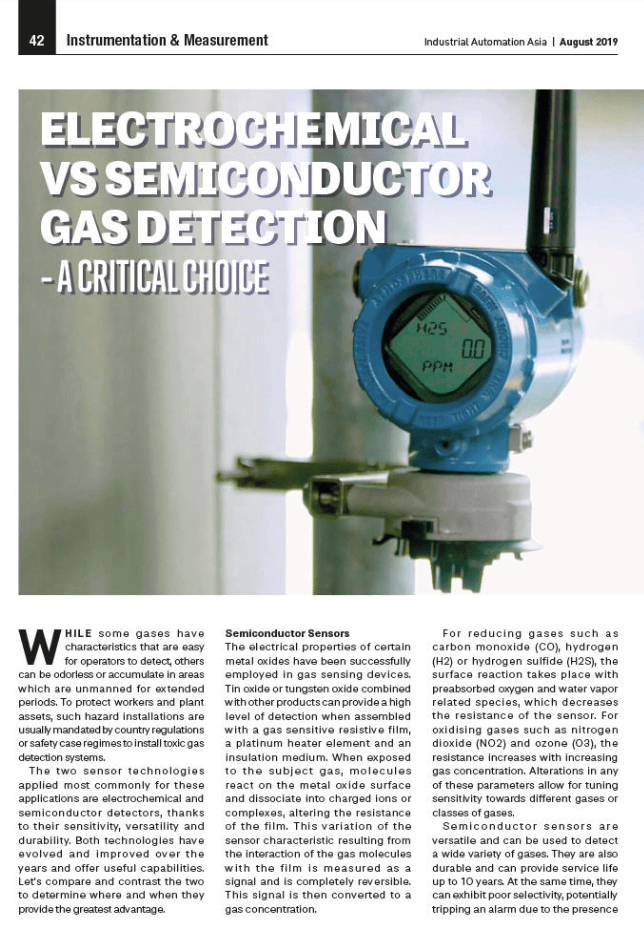In many manufacturing and production processes, dangerous gases are present due to their use as a fuel, feedstock or creation as an end product.
In an Industrial Automation Asia article, Electrochemical vs Semiconductor Gas Detection – A Critical Choice, Emerson’s Shing Yenn Tan compares and contrasts these detection technologies.
 Shing Yenn opens with the purpose of gas detection monitors.
Shing Yenn opens with the purpose of gas detection monitors.
To protect workers and plant assets, such hazard installations are usually mandated by country regulations or safety case regimes to install toxic gas detection systems.
Semiconductor sensors work having their:
…molecules react on the metal oxide surface and dissociate into charged ions or complexes, altering the resistance of the film. This variation of the sensor characteristic resulting from the interaction of the gas molecules with the film is measured as a signal and is completely reversible.
By changing the composition of the resistive film, these semiconductor sensors:
…are versatile and can be used to detect a wide variety of gases. They are also durable and can provide service life up to 10 years.
One of the downsides is that:
…they can exhibit poor selectivity, potentially tripping an alarm due to the presence of a different gas.
Electrochemical sensors work by undergoing a chemical reaction in a cell with a:
…two- or three-electrode arrangement in which concentration measurements can be performed at steady-state or transient. Depending on the mode of operation, electrochemical sensors can create potentiometric, amperometric or electrocatalytic outputs.
Their advantages are that they are:
…highly sensitive, consume low power and have good specificity to target gases. Another advantage is their direct linear relationship of current output to gas concentration, allowing measurement of a real zero.
One disadvantage with electrochemical sensors is that the:
…speed of reaction, for example, decreases with decreasing temperature, so the temperature range of electrochemical cells tends to be narrow, reducing their ability to operate in very cold weather.
Read the article for other advantages and disadvantages and recommendations on which might be the best fit in your application.
Visit the Flame and Gas Detection section on Emerson.com for more on the technologies and products to help you mitigate the risks with dangerous and hazardous gases in your production process. You can also connect and interact with other measurement and gas monitoring experts in the Measurement Instrumentation group in the Emerson Exchange 365 community.

